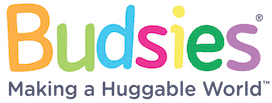The Benefits of Integrating Art and Creativity into Education
Unleashing creativity in the classroom isn’t just a fun diversion – it’s a powerful catalyst for learning. When you bring art and creative expression into your teaching, you open up new pathways for students to engage with and understand complex concepts. From boosting critical thinking skills to fostering emotional intelligence, the benefits of integrating creativity into education are far-reaching and transformative.
As educators, you have the unique opportunity to shape young minds and prepare them for an ever-changing future. By incorporating art and creative activities across subjects, you’re not only making learning more enjoyable but also equipping your students with essential skills they’ll need throughout their lives.
Enhancing Critical Thinking and Problem-Solving Skills
When you introduce art and creativity into your lessons, you’re actually training your students to think outside the box. Creative projects often require students to approach problems from multiple angles, encouraging flexible thinking and innovative solutions. This skill transfers seamlessly to other academic areas and real-life situations.
For example, asking students to visually represent a historical event through a painting or collage requires them to analyze information, make connections, and synthesize their understanding in a new format. This process deepens their engagement with the subject matter and helps them develop a more nuanced perspective.
You’ll notice that as students become more comfortable with creative problem-solving, they’ll start applying these skills to other areas of their studies. They’ll approach math problems with newfound curiosity or tackle scientific experiments with greater imagination. By fostering creativity, you’re laying the groundwork for a lifetime of critical thinking and adaptability.
Boosting Emotional Intelligence and Self-Expression
Art and creative activities provide a unique avenue for students to explore and express their emotions. When you incorporate these elements into your teaching, you’re giving your students valuable tools for self-discovery, self-worth and communication. Olivia Cosío puts it best, describing the benefits of education centred around creativity as a “protective factor against negative self-concept”. This emotional literacy is crucial for their personal development and social interactions.
Through creative projects, students learn to recognize and articulate their feelings in healthy ways. Whether it’s through painting, creative writing, or drama, these activities allow for safe emotional exploration. You’ll see your students develop greater empathy as they share their work and interpret the creations of their peers.
Improving Memory and Information Retention
When you harness the power of creativity in your lessons, you’re tapping into a highly effective method for boosting memory and information retention. The brain naturally forms stronger connections when engaging with material in diverse, hands-on ways.
Creative projects also encourage students to interact with information on a deeper level. When they have to represent concepts visually or through performance, they’re forced to truly understand the material rather than simply memorize it. This leads to more meaningful, long-lasting learning that students can apply in various contexts. It’s worth noting that this approach can significantly enhance the quality of study notes and study material students produce.
Incorporating artistic elements into lecture notes can transform them into vibrant study guides that are both informative and visually engaging. This creative approach to note-taking not only makes revision more enjoyable but also provides valuable study help for visual learners. As an educator, you can encourage students to experiment with different artistic techniques in their note-taking, which can serve as effective exam prep tools. For those seeking additional resources, you can find study guides at Studocu.com to complement your creative learning strategies.
Fostering Collaboration and Communication Skills
Group creative projects are excellent tools for developing essential teamwork and communication skills. When you assign collaborative art or multimedia projects, you’re creating opportunities for students to practice negotiation, active listening, and constructive feedback. These skills are invaluable in both academic and professional settings.
You’ll see students learn to appreciate diverse perspectives as they work together to bring their creative visions to life. They’ll discover how to effectively communicate their ideas, compromise when necessary, and build on each other’s strengths. These experiences in creative collaboration prepare them for future team projects and workplace dynamics.
Encouraging students to present their creative work to the class also builds public speaking skills and confidence. As they explain their artistic choices and thought processes, they’re developing the ability to articulate complex ideas clearly and engagingly. This practice in clear communication will serve them well across all subject areas and in their future careers.
The Future of Creativity and Education
Embracing art and creativity in education isn’t just about producing beautiful artwork or performances – it’s about nurturing well-rounded, confident, and capable individuals. By integrating creative approaches into your teaching, you’re equipping your students with a powerful set of skills that will serve them well throughout their lives.
From enhancing critical thinking and problem-solving abilities to fostering emotional intelligence and improving information retention, the benefits of creativity in education are clear and far-reaching. As you incorporate these elements into your classroom, you’ll witness the transformation in your students’ engagement, understanding, and overall enthusiasm for learning.


